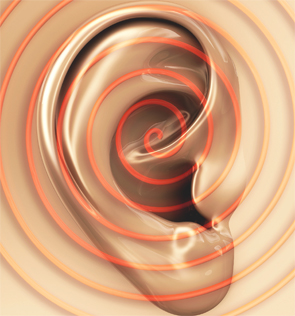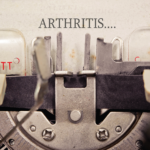
SSNHL was first described in 1979 in a series of 18 patients from Iowa whose acute hearing loss was not explained by the usual causes.
Image Credit: xrender/shutterstock.com
I sometimes find myself mired in sticky clinical circumstances. I am facing a distraught patient who is seeking my opinion about a condition that, according to some, may not truly belong in the rheumatologist’s bailiwick. Case example: hearing loss.
The Steroid Test
Sudden sensorineural hearing loss (SSNHL) and its relative, autoimmune inner ear disease (AIED), can both be devastating disorders. Literally materializing out of thin air, they inflict havoc on victims young or old, male or female. Timely diagnosis and prompt initiation of corticosteroid therapy may preserve some or all hearing, albeit for a brief period, in approximately 60% of patients.1 Unfortunately, alternate medical therapies for those who fail to respond to corticosteroids have proved largely ineffective. Patients’ hearing loss is impervious to our standard armamentarium: Methotrexate, azathioprine, mycophenolate, cyclophosphamide and TNF inhibitor drugs offer little benefit. Hearing aids or cochlear implants become the only viable options.
Unlike most other autoimmune disorders, the response to steroids or the lack thereof determines a patient’s fate. One simple observation determines an illness’ trajectory.
It’s quite unnerving to suddenly lose hearing. When I experienced my own bout of SSNHL many years ago, high-dose steroids succeeded in bringing my hearing back, although for a few harrowing weeks, an eerie wall of silence replaced much of the din surrounding me. Often, it seemed the loudest sound I heard was a monotone of continuous tinnitus that played unendingly in my damaged ear like a scratched record album. At least the neighboring delicate labyrinth organs of my inner ear were spared, and I suffered no accompanying vestibular symptoms. Weeks after filling my steroid prescription, the sound of Brahm’s lullaby playing on my child’s wind-up toy no longer sounded off key. Consider me lucky.
SSNHL was first described in 1979 in a series of 18 patients from Iowa whose acute hearing loss was not explained by the usual causes, such as exposure to ototoxic drugs, loud noises or structural ear disease.2 Based on the author’s observation that a single patient had vasculitis identified on a biopsy and that all patients improved following treatment with either corticosteroids or cyclophosphamide, he concluded that this form of SSNHL was autoimmune in nature.
At first glance, the world of immune-otology bears little resemblance to rheumatology. However, not infrequently, our paths cross; in cases of vasculitis involving the ears, nose and throat in patients with granulomatous polyangiitis (GPA) and its variants; in Cogan’s syndrome with its characteristic ear and eye findings; and in some patients with giant cell arteritis who develop hearing loss issues. In their own ways, relapsing polychondritis and Paget’s disease can inflict substantial damage to the exquisite cartilaginous and bony structures within the middle and inner ear that transform sound waves into comprehensible words and musical tones. Some hearing loss is iatrogenic. Recall the days of salicylism, when our high-dose-aspirin-based therapies often inflicted a transient hearing loss and triggered tinnitus?
Immune Privilege of the Eye: See No Evil
The outsized role played by sound and sight, smell, taste and touch in human’s evolutionary ascent is extraordinary. As the senses steadily grew in sophistication, the massive data processing and analytic capabilities required for the interpretation of continuous sensory input created enormous stresses on brain development, which resulted in the remarkable growth and expansion of our cognitive capabilities. One could surmise that immune surveillance systems played critical roles in safely harboring and protecting the senses from an inadvertent attack by rogue lymphocytes by creating safe refuges from immune-mediated inflammation. In fact, due to the sensitive nature of these tissues, the brain, the pregnant uterus, the testes and the eye are generally “no-fly zones” for inflammatory cells.
